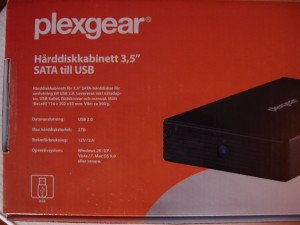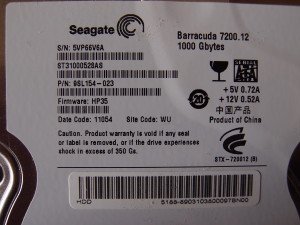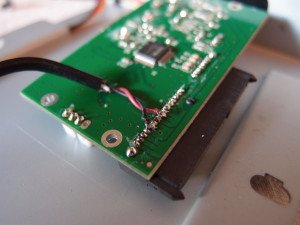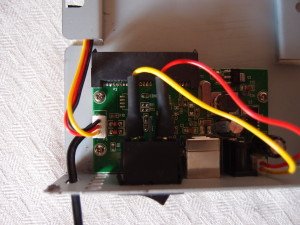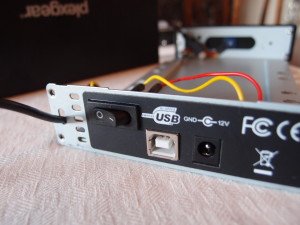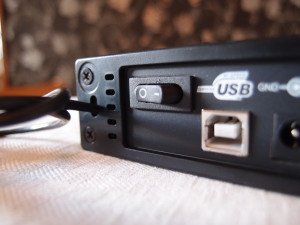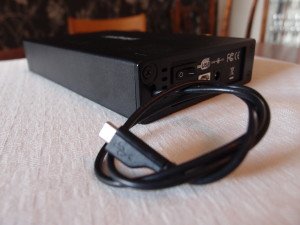So I have some Linux, Ubuntu, servers that are used for shared hosting. Many of the customers use WordPress and I think that it’s an awesome solution that so many can get a great website up and running in almost no time. The flaw with WordPress is that it has a lot of security holes if they don’t upgrade to the latest version. WordPress has a great update feature, but since my customers do not log in on their sites they don’t see that, so what to do. I decided that sending them an email would maybe encourage them a little, specifically the site admin.
I couldn’t find any good script that solved my problem so I decided to copy paste something that would do the trick.
Updated and locate are a good start for finding version.php.
I’ve put my files under /root/scripts/wp-version
run-wp.version-finder.sh looks like this:
updatedb
locate wp-includes/version.php | xargs grep "wp_version = " > /root/scripts/wp-version/tmp-version.txt
php /root/scripts/wp-version/wp-version.php
The wp-version.php script looks like this:
/root/scripts/wp-version/tmp-version.txt
// curl_init and mysql is needed for this to work.
// apt-get install php5-intl
// Adminiadress, sends short summary.
$AdminAdress = "[email protected]"; // Change e-mail adress
$ServerName = "SERVER_NAME";
$Sender = "[email protected]";
$myFile = "/root/scripts/wp-version/tmp-version.txt";
$summary = "";
//check for latest WordPress version
$apiUrl = 'http://api.wordpress.org/core/version-check/1.6/';
$apiFile = 'cache/api.json';
// Verify that cache folder exist
if (!file_exists('cache')) {
mkdir('cache', 0777, true);
}
if((is_file($apiFile) and filemtime($apiFile)< time()-3600) OR !is_file($apiFile)) {
$apiContent = getData($apiUrl);
if($apiContent!=''){
file_put_contents($apiFile, $apiContent);
}
}
$apiContent = file_get_contents($apiFile);
$apiReturn = unserialize($apiContent);
$current_version = $apiReturn['offers'][0]['current'];
$lines = file($myFile);
foreach ($lines as $line_num => $line) {
$adminEmail = array();
$siteAdminEmail = array();
$wpversionArr = explode( "'", $line);
$wpversion = $wpversionArr[1];
// Verify against wordpress.org if the version is the latest.
if (version_compare($wpversion, $current_version, '<')) {
// Verify that the file wp-config.php is place.
// There is a need to check if the file is found i one of the parent folders, future fix
$filename = explode( "wp-includes/", $line);
$filename = $filename[0] . "wp-config.php";
if (file_exists($filename)) {
$configlines = file($filename);
$DB_USER = "";
$DB_PASSWORD = "";
$DB_HOST = "";
$DB_NAME = "";
$tbl_prefix = "";
$siteurl = "";
// get all the variables that is needed for mysql connection.
foreach ($configlines as $line_num => $configline) {
if (strpos($configline,"'DB_USER'") > 0 ) {
$DB_USER = (explode( "'", $configline));
$DB_USER = $DB_USER[3];
}
if (strpos($configline,"'DB_USER'") > 0 ) {
$DB_USER = (explode( "'", $configline));
$DB_USER = $DB_USER[3];
}
if (strpos($configline,"'DB_PASSWORD'") > 0 ) {
$DB_PASSWORD = (explode( "'", $configline));
$DB_PASSWORD = $DB_PASSWORD[3];
}
if (strpos($configline,"'DB_HOST'") > 0 ) {
$DB_HOST = (explode( "'", $configline));
$DB_HOST = $DB_HOST[3];
}
if (strpos($configline,"'DB_NAME'") > 0 ) {
$DB_NAME = (explode( "'", $configline));
$DB_NAME = $DB_NAME[3];
}
if (strpos($configline,"table_prefix") > 0 ) {
$tbl_prefix = (explode( "'", $configline));
$tbl_prefix = $tbl_prefix[1];
}
}
// Connect to the wordpress database
$con=mysqli_connect($DB_HOST,$DB_USER,$DB_PASSWORD,$DB_NAME) or die;
// Check connection
if (mysqli_connect_errno($con)) {
echo "Failed to connect to MySQL: " . mysqli_connect_error();
}
// Retreve Site URL
$sqlquery = "select option_value from " . $tbl_prefix . "options where option_name like 'siteurl'";
$result = mysqli_query($con,$sqlquery);
if (!$result) {
echo "MySQL ERROR DIED! Retreve Site URL" . PHP_EOL;
die('Invalid query: ' . mysql_error());
}
while($row = mysqli_fetch_array($result)) {
$siteurl = $row['option_value'];
$siteurl = (explode( "//", $siteurl));
$siteurl = $siteurl[1];
}
// Write version of wordpress installation
//echo "WP-Version is: " . $wpversion . PHP_EOL;
// Retreve all Admins email address
$sqlquery = "SELECT * FROM " . $tbl_prefix . "users JOIN " . $tbl_prefix . "usermeta ON ( " . $tbl_prefix . "users.id = " . $tbl_prefix . "usermeta.user_id ) WHERE " . $tbl_prefix . "usermeta.meta_key LIKE 'wp_user_level' AND " . $tbl_prefix . "usermeta.meta_value = '10'";
$result = mysqli_query($con,$sqlquery);
if (!$result) {
echo "MySQL ERROR DIED! Retreve all Admins email" . PHP_EOL;
die('Invalid query: ' . mysql_error());
}
while($row = mysqli_fetch_array($result)) {
// Uncomment to send e-mail to all Admins.
// send_email( $row['option_value'], $siteurl, $wpversion, $current_version);
$tmp = $row['user_email'];
array_push($adminEmail, $tmp);
}
// Retrive the Site Admin email address and spam them until they upgrade wordpress.
$sqlquery = "select option_value from " . $tbl_prefix . "options where option_name like 'admin_email'";
$result = mysqli_query($con,$sqlquery);
if (!$result) {
die('Invalid query: ' . mysql_error());
}
while($row = mysqli_fetch_array($result)) {
// Uncomment to send e-mail to all Site-Admins.
// send_email( $row['option_value'], $siteurl, $wpversion, $current_version);
$tmp = $row['option_value'];
array_push($siteAdminEmail, $tmp);
}
mysqli_close($con);
} else {
echo "NO file found" . PHP_EOL;
}
$siteurlUTF8 = idn_to_utf8($siteurl);
$adminEmailComma = join(", ", $adminEmail);
$siteAdminEmailComma = join(", ", $siteAdminEmail);
$summary .= $siteurlUTF8 . "
";
$summary .= "version: " . $wpversion . "
";
$summary .= "Admin Emails: " . $adminEmailComma . "
";
$summary .= "SiteAdmin Emails: " . $siteAdminEmailComma . "
" . "\r\n";
}
}
// Comment next line to not send e-mail to server admin.sendAdminSummary($AdminAdress, $summary);
function send_email($address, $siteurl, $wpversion, $current_version){
global $Sender;
$to = $address;
$subject = "Detfinns en ny version av wordpress forsajten: " . idn_to_utf8($siteurl) ;
$message = '' . $subject . '
Hej
Du får detta meddelande gäller sajten: ' . idn_to_utf8($siteurl) . '.
Det har kommit en ny version ' . $current_version . ' av wordpress och eftersom du fortfarande använder version ' . $wpversion . ' så bör den upgraderas.
Scandinavian Hosting
';
$headers = 'MIME-Version: 1.0' . "\n";
$headers .= 'Content-type: text/html; charset=utf-8' . "\n";
$headers .= 'From: ' . $Sender . "\n";
$headers .= 'Reply-To: ' . $Sender . "\n";
mail($to, $subject, $message, $headers);
}
functionsendAdminSummary($address, $summary){
global $current_version;
global $ServerName;
global $Sender;
$to = $address;
$subject = "Sammanställning avWordpresssajter sombehöveruppdateras";
$message = '' . $subject . '
Hej
Här kommer en sammanställning av sajter som behöver uppdateras på ' . $ServerName . '
Senaste versionen av WordPress är ' . $current_version . '
' . $summary . '
Med Vänlig Hälsning
Scandinavian Hosting
';
$headers = 'MIME-Version: 1.0' . "\n";
$headers .= 'Content-type: text/html; charset=utf-8' . "\n";
$headers .= 'From: ' . $Sender . "\n";
$headers .= 'Reply-To: ' . $Sender . "\n";
mail($to, $subject, $message, $headers);
}
// http://yalamber.com/2012/12/get-the-latest-version-number-of-wordpress-using-api/
function getData($url) {
if(is_callable('curl_init')){
$ch = curl_init();
$timeout = 5;
curl_setopt($ch, CURLOPT_URL, $url);
curl_setopt($ch, CURLOPT_RETURNTRANSFER, 1);
curl_setopt($ch, CURLOPT_CONNECTTIMEOUT, $timeout);
$data = curl_exec($ch);
curl_close($ch);
return $data;
}else{
return file_get_contents($url);
}
}
?>
The get it all to work I run the main script once a month, first monday at 8:00
cronetab-e
Add a line that looks like this:
0 8 * * 1 /root/scripts/wp-version/run-wp-version.sh
That is all
As always, post a comment if you find it useful.


